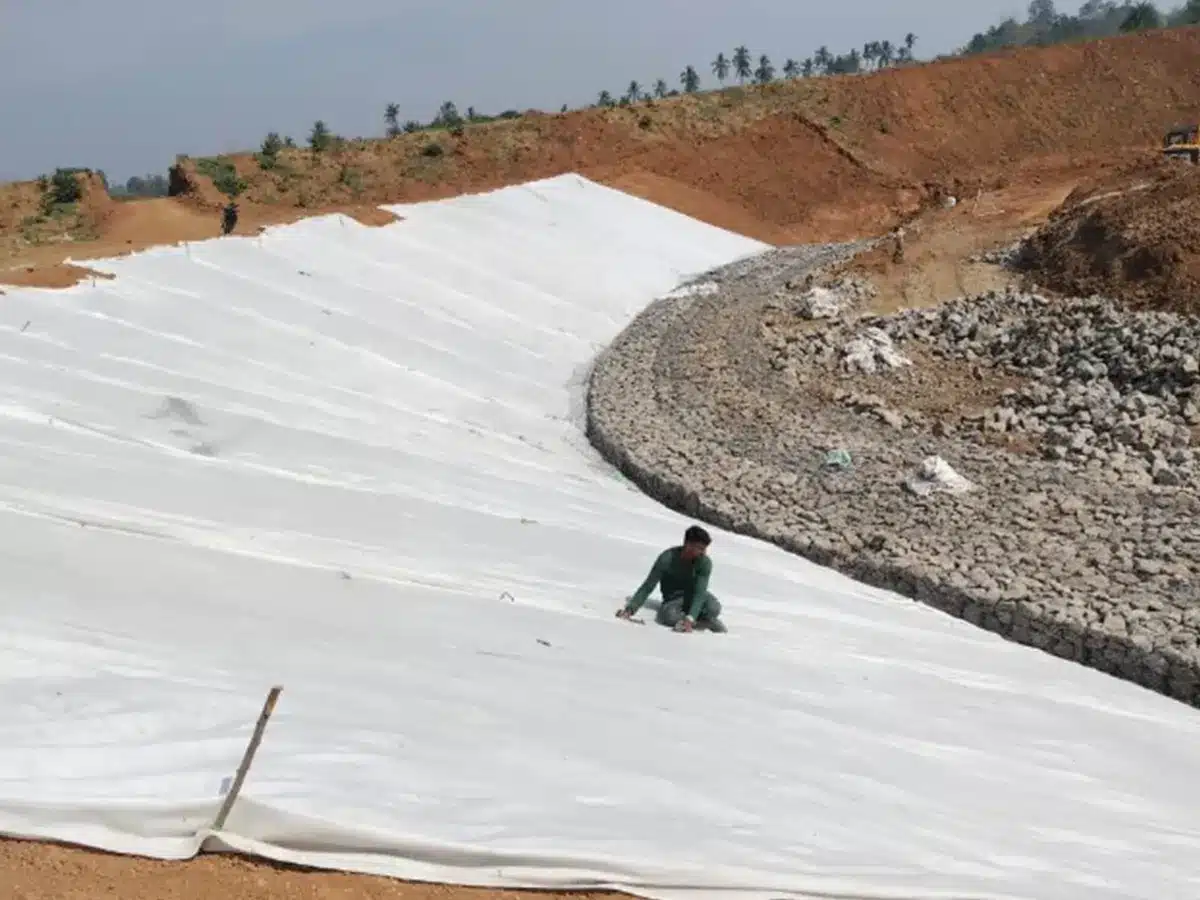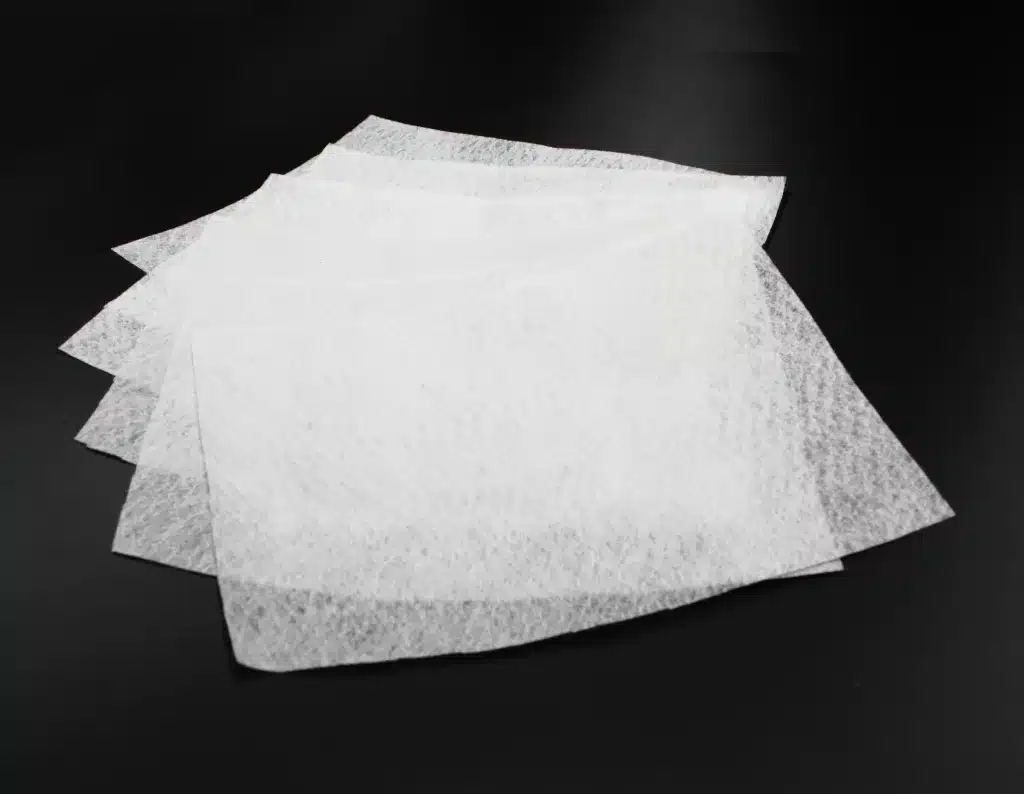+86-159 9860 6917
info@geofantex.com
geofantex@gmail.com
+86-400-8266163-44899
In the world of textiles, the distinction between non-woven and woven fabrics is significant, influencing everything from construction practices to everyday consumer goods. This article explores the fundamental differences between these two types of materials, emphasizing that woven geotextiles have higher strength values, suitable for applications requiring durability, while non-woven geotextiles offer higher flow rates and permeability, ideal for uses demanding filtration. By delving into their respective advantages, applications, and suitability for various purposes, we aim to clarify which type of textile might be better suited for specific uses, enhancing your understanding of their unique characteristics.
Which is better, woven or nonwoven geotextile?
Advantages:
- High Strength and Durability: Superior tensile strength, making them suitable for high-load applications. Excellent long-term performance due to their resistance to degradation.
- Low Elongation: Minimal stretch under stress, providing stability in applications where minimal deformation is crucial.
- Cost-Effectiveness: Generally less expensive in terms of long-term use due to their durability and strength.
- Application Suitability: Ideal for the reinforcement and stabilization of embankments, retaining walls, and roads. Commonly used in erosion control projects.
Disadvantages:
- Limited Water Flow: Lower permeability compared to nonwoven geotextiles, making them less suitable for applications requiring high water filtration.
- Installation Challenges: More challenging to handle and install due to their rigidity and lower flexibility.
Nonwoven Geotextiles
Advantages:
- High Permeability: Excellent water filtration and drainage properties due to their porous structure. Effective in preventing soil erosion while allowing water to pass through.
- Flexibility: More flexible and easier to handle and install, especially in complex or irregular terrain.
- Versatility: Suitable for a wide range of applications, including drainage systems, soil stabilization, and separation layers.
- Cost-Effectiveness: Generally cheaper upfront, especially for applications where their properties are well-suited.
Disadvantages:
- Lower Strength: Lower tensile strength compared to woven geotextiles, making them less suitable for high-stress applications.
- Durability Concerns: More susceptible to damage from UV exposure and physical wear and tear, potentially leading to shorter lifespan in some environments.
The choice between woven and nonwoven geotextiles depends on the specific requirements of the project:
- Woven Geotextiles: Best for applications requiring high strength and durability, such as road construction and embankment reinforcement.
- Nonwoven Geotextiles: Ideal for projects needing high permeability and flexibility, such as drainage systems and soil stabilization.

Where is woven geotextile used?
Woven geotextile is commonly utilized in various applications and industries due to its durability and strength. Here are some specific uses:
Road Construction:
- Application: Used as a separator and reinforcement layer.
- Example: Placed between subgrade and aggregate layers to improve stability and prevent mixing of materials.
- Benefits: Enhances road lifespan, reduces maintenance costs, and improves load distribution.
Erosion Control:
- Application: Protects soil from erosion by water or wind.
- Example: Installed on slopes, riverbanks, and shorelines.
- Benefits: Maintains soil structure, prevents land degradation, and supports vegetation growth.
Drainage Systems:
- Application: Acts as a filtration layer in drainage systems.
- Example: Used in retaining walls, landfill liners, and French drains.
- Benefits: Prevents clogging of drainage pipes, improves water flow, and extends the life of drainage systems.
Reinforcement:
- Application: Strengthens and stabilizes weak soil.
- Example: Utilized in embankments, retaining walls, and foundation systems.
- Benefits: Increases load-bearing capacity, reduces settlement, and enhances structural stability.
Agriculture:
- Application: Used for soil reinforcement and separation.
- Example: Installed in agricultural fields to improve soil structure and support crop growth.
- Benefits: Prevents soil erosion, improves soil drainage, and enhances crop yields.
Where is non-woven geotextile used?
Non-woven geotextile is commonly utilized in various applications and industries due to its versatile properties. Here are some detailed examples of how and where this material is typically employed:
Construction Industry:
- Road Construction: Non-woven geotextiles are used for separation, filtration, and reinforcement of soil in road construction. They prevent the mixing of subgrade soil with the aggregate base, enhancing the lifespan and stability of the road.
- Embankments and Slopes: These materials are used to reinforce embankments and slopes, providing stability and preventing erosion by allowing water to pass through while retaining soil particles.
Environmental Engineering:
- Landfills: Non-woven geotextiles act as a protective layer in landfill sites, preventing the puncture of geomembranes by sharp objects and aiding in leachate collection.
- Erosion Control: They are used in coastal and riverbank protection projects to prevent erosion by stabilizing soil and promoting vegetation growth.
Water Management:
- Drainage Systems: Non-woven geotextiles are employed in subsurface drainage systems to filter soil particles while allowing water to pass through, preventing clogging and maintaining efficient drainage.
- Dams and Reservoirs: These geotextiles are used in dam construction and reservoir linings to prevent soil erosion and to provide filtration and separation functions.
Agriculture:
- Soil Stabilization: In agriculture, non-woven geotextiles are used to stabilize soil in areas prone to erosion, such as steep slopes and drainage channels.
- Weed Control: They are also used as a barrier to control weed growth in crop fields, gardens, and landscaping projects.
Railway Construction:
- Track Stabilization: Non-woven geotextiles are used under railway tracks to separate the ballast from the subgrade, providing stabilization and extending the lifespan of the railway infrastructure.
What is the difference between woven and non-woven textiles?
Unique Characteristics
Woven Textiles:
- Structure: Composed of interlacing warp and weft yarns.
- Durability: Generally strong and durable due to the interlocking yarns.
- Flexibility: Flexible but can be less stretchy unless elastic fibers are used.
Non-Woven Textiles:
- Structure: Made from fibers bonded together by chemical, mechanical, heat, or solvent treatment.
- Durability: Can vary from very strong to very weak, depending on the manufacturing process.
- Flexibility: Generally less flexible and more rigid compared to woven textiles.
Manufacturing Processes
Woven Textiles:
- Method: Produced on a loom where threads are woven together.
- Techniques: Various weaving techniques (e.g., plain weave, twill weave, satin weave).
- Speed: Slower process compared to non-woven manufacturing.
Non-Woven Textiles:
- Method: Created by bonding or felting fibers together.
- Techniques: Includes spunbond, meltblown, and needle-punched methods.
- Speed: Faster production process, allowing for mass production.
Practical Applications
Woven Textiles:
- Uses: Clothing, upholstery, curtains, industrial fabrics.
- Examples: Denim, canvas, linen, silk.
Non-Woven Textiles:
- Uses: Medical products (e.g., surgical gowns, masks), disposable products (e.g., diapers, wipes), geotextiles.
- Examples: Felt, Tyvek, interfacing.
Woven textiles are characterized by their interlaced structure, offering durability and flexibility, and are made using a loom with various weaving techniques. They are used in a wide range of applications from clothing to industrial fabrics. Non-woven textiles, on the other hand, are made by bonding fibers together through different methods, resulting in a faster production process. They find use in medical, disposable, and industrial products.
The debate between non-woven and woven textiles is not about which is superior, but rather about which is more appropriate for a particular use. Woven geotextiles excel in applications requiring strength and durability, while non-woven geotextiles are preferred for tasks needing excellent filtration and flexibility. Understanding these differences is crucial in sectors ranging from civil engineering to environmental conservation, helping professionals choose the right material based on specific project needs and environmental conditions.



Get Free Sample
We’ll respond as soon as possible(within 12 hours)






















